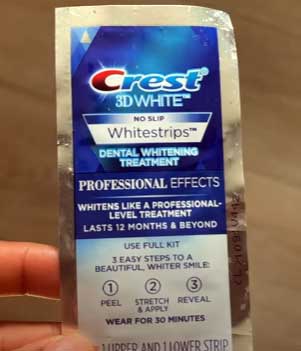Whitening Strips Burn Relief

The quest for a brighter, more radiant smile often leads individuals to explore various teeth whitening options. Among the most popular and accessible methods are whitening strips, which have gained favor for their ease of use and effectiveness. However, like any dental treatment, the use of whitening strips can sometimes lead to side effects, with one of the most common complaints being sensitivity or a burning sensation in the teeth and gums. Understanding the causes of this discomfort and exploring relief options can help individuals navigate the teeth whitening process more comfortably.
Causes of Whitening Strips Burn Relief
Hydrogen Peroxide Concentration: The primary active ingredient in whitening strips is hydrogen peroxide, a chemical that penetrates the tooth enamel to break down and lift stains. While generally considered safe, high concentrations of hydrogen peroxide can irritate the gums and cause sensitivity.
Improper Use: Following the instructions provided with the whitening strips is crucial. Overuse or leaving the strips on for longer than recommended can increase the risk of gum irritation and tooth sensitivity.
Pre-existing Conditions: Individuals with pre-existing gum recession, tooth decay, or sensitive teeth may experience heightened sensitivity when using whitening strips.
Gum Line Exposure: If the strips come into contact with the gums for an extended period, they can cause irritation and a burning sensation.
Relief Strategies for Whitening Strips Burn
Desensitizing Toothpaste: Using a toothpaste specifically designed for sensitive teeth both before and after applying whitening strips can help reduce sensitivity. These toothpastes often contain ingredients like potassium nitrate or strontium chloride that help block the dentinal tubules in the teeth, reducing the flow of fluids that can cause pain.
Adjusting Application Time: If sensitivity is experienced, reducing the application time of the strips on the first few uses can help the teeth and gums adjust to the peroxide. Gradually increasing the application time as the teeth become less sensitive can be an effective strategy.
Interdental Care: Ensuring that the strips do not overlap onto the gums and carefully avoiding any areas of gum recession can minimize irritation. Using strips that are specifically designed to fit around the contours of the teeth can also help reduce gum exposure.
Rinsing with Salt Water: After removing the strips, rinsing the mouth with warm salt water can help soothe irritated gums and reduce the burning sensation.
Avoiding Trigger Foods and Drinks: During the whitening process, it’s advisable to avoid consuming very hot or cold foods and drinks, as these can exacerbate sensitivity.
Professional Dental Care
While whitening strips are an over-the-counter solution, consulting with a dental professional before starting any teeth whitening regimen can provide personalized advice tailored to the individual’s dental health. Dentists can offer in-office whitening treatments that are more controlled and may produce results with less sensitivity. Additionally, they can recommend specific products and techniques to manage sensitivity, offering a more comprehensive approach to achieving a whiter, healthier smile.
Conclusion
The pursuit of a whiter smile should not come at the cost of comfort or oral health. By understanding the potential causes of burning sensations associated with whitening strips and implementing strategies for relief, individuals can enjoy the benefits of teeth whitening while minimizing its drawbacks. Always prioritize dental health, and when in doubt, consult with a professional to ensure that the path to a brighter smile is both safe and effective.
Frequently Asked Questions
How can I minimize gum irritation when using whitening strips?
+To minimize gum irritation, ensure the whitening strips do not overlap onto the gums. You can also try applying a small amount of petroleum jelly to the gums before use or using strips specifically designed to fit around the contours of the teeth.
Can I use whitening strips if I have sensitive teeth?
+Yes, but with caution. If you have sensitive teeth, start by using the strips for a shorter duration than recommended and gradually increase the time as your teeth become less sensitive. It's also advisable to use a desensitizing toothpaste before and after the whitening process.
How often can I use whitening strips?
+Always follow the manufacturer's instructions. Typically, whitening strips can be used once or twice a year, depending on the product and your teeth's response. Overuse can lead to increased sensitivity and other dental issues.
By adopting a thoughtful and informed approach to teeth whitening, individuals can balance their desire for a brighter smile with the need to protect their oral health, ensuring that the journey to a more radiant grin is both effective and comfortable.


